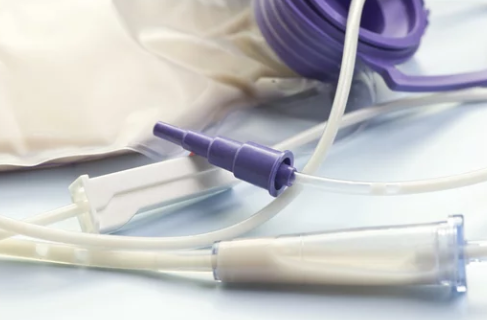Weight loss is a problem for many people living with MND, with approximately 20% of people already having lost 10% of their weight at diagnosis. Some of this weight loss may be due to a person experiencing difficulties with chewing and swallowing because of increased muscle weakness. It could be due to a lack of appetite because of tiredness, anxiety or low mood. It can also be caused by hypermetabolism which is when the body uses more energy than is being consumed, even without exercise, and is seen in some people with MND. Studies have shown that weight loss is linked to shorter survival.
At the 34th International Symposium on ALS/MND in Basel, Switzerland one of the sessions looked at nutritional assessment and management, with talks covering feeding tube management, the decision-making process of feeding tube placement, how diet might help slow progression, alternative ways to measure nutritional state and how appetite is controlled in the brain. In this series of five blogs, we are going to look a little closer at each of these studies and their potential for helping people living with MND. This is blog one in the series.
Monitoring nutritional status after feeding tube placement
Dr Haris Stavroulakis from the University of Sheffield gave an update on the results from PostGas, an MND Association funded multi-centre evaluation of the post-gastrostomy management of people living with MND.
Gastrostomy is the long-term nutritional support for people living with MND. A tube is surgically inserted into the stomach, bypassing the need to chew and swallow food for people who find this difficult. The decision to undergo gastrostomy is difficult. One of the reasons for this is because there is no firm evidence that gastrostomy is effective in stabilising nutritional status in people living with MND, or that it conveys a survival benefit to people in the later stages of the condition.
A previous study called PROGAS, published in 2015, looked primarily at the safety of gastrostomy, but also when it might be best for people to undergo the procedure and any observed clinical outcomes. This found that gastrostomy prevented weight loss in only about 50% of people who took part in the study, and the greater the weight loss (more than 10%) in the time between diagnosis and gastrostomy, the less likely a person was to gain weight and had a shortened survival. To further understand these observations, a follow-up study called PostGas began.

The main aims of PostGas were to:
- understand the reasons behind weight loss following gastrostomy;
- observe nutritional outcomes following gastrostomy;
- identify factors that may influence these outcomes.
The primary outcome was a change in weight percentage from month 0 (time of gastrostomy which was, on average, 19 months from onset of symptoms to month 3, assessed by changes in clinical characteristics, progression measured by ALSFRS-R (at month 0 this was, on average, 27), anthropometric markers (measures of weight, height, and upper arm), quality of life questionnaires and dietary intake diaries. Assessments were also made at months 6 and 9 after gastrostomy. At month 0, the average weight loss was about 6.3% since diagnosis.
Unfortunately, the study had to be paused during the Covid-19 pandemic and, when it resumed, information was collected remotely which was challenging with regard to weight measurements. This affected the primary outcome and, for the purposes of analysis, only 64 of the 155 participants who successfully had a gastrostomy tube inserted were included in this.
At month 0 (time of gastrostomy) participants were asked what they felt the potential benefits of gastrostomy would be for them. Sixty percent felt that it would definitely reduce the risk of choking, 41% felt it would definitely reduce stress at mealtimes, 48% felt it would reduce stress on carers and 45% felt it would definitely improve their quality of life. Interestingly, only 10% of participants thought that gastrostomy would definitely help them return to their usual weight, with 26% feeling that it would help them recover weight loss to a moderate extent and 38% believing that it would prevent weight loss to a large extent.
At three months, the average weight loss for the group was recorded at 3.3% which is not clinically significant for malnutrition, which is defined as weight loss of 5% over three months. However, when observed individually, several participants did lose more than 5% of their weight over the three-month period.
The researchers were also interested to find out how frequently people used the tube, because eating and drinking via the mouth is still possible after gastrostomy. Table 1 below shows that around 50% of participants were using the tube and taking nutrition by mouth, indicating that people prefer to maintain an oral diet for as long as possible.
| Nutritional intake method | Percentage of participants |
| Mouth only | 22.4 |
| Mouth mainly, tube sometimes | 20.7 |
| Mouth and tube equally | 10.3 |
| Tube mainly, mouth sometimes | 19.0 |
| Tube only | 27.6 |
The tube also worked well in increasing nutritional intake between month 0 and month 3, with increases observed in overall energy intake (that is the number of calories), water consumption, and fat, carbohydrate and protein intake by participants.
Weight change was then recorded at month 3. Of the 64 participants, around 60% had lost more than 1kg since month 0, and the remaining 40% either maintained or gained weight. To understand why there might be this difference, nutritional intake was compared between the two groups.
It was found that the people who had lost weight in the first three months after gastrostomy had a significantly lower intake of protein and overall calories than those who had maintained or gained weight.
Survival analysis was conducted on both groups, and it was seen that those who had lost weight experienced a significantly shortened survival.
The researchers were also interested to see if participants were meeting estimated nutritional requirements in terms of overall calorie intake, protein intake and fluid intake. Sixty percent of participants did not meet overall calorie intake and, worryingly, only 20% met fluid intake requirements of 30ml of fluid per 1kg of body weight – hydration is very important in nutritional management. Around 60% of participants were meeting the required intake of 1g of protein per kg of body weight.
What does this mean for people living with MND?
The PostGas study showed that:
- Post-gastrostomy nutritional outcome varies between individuals.
- Higher calorie and high protein intake may prevent further weight loss after gastrostomy.
- It is very important to monitor people’s intake closely to ensure that at least minimum requirements are met, although it must be considered that these are general requirements and may not be suitable for all individuals, so an individual approach is best.
- Outcomes must be monitored carefully – weight alone may not be enough so other anthropometric measurements should be used together with self-monitoring, meaning measurements can be taken more regularly.
- There is a need for long-term collection of clinical data post-gastrostomy so these data can be used to discover why gastrostomy works better for some people than others.
- It is important to find out why people don’t use the feeding tube all the time and to make sure that the support is in place to enable them to do this.
Eating and drinking play a huge part in all our lives, and losing the ability to enjoy food and drink orally can be difficult to come to terms with. Undergoing gastrostomy is a major decision that needs to be considered carefully and with understanding and support. It may be suggested earlier than an individual thinks necessary as evidence seems to suggest that early placement leads to longer survival outcomes, as discussed at the beginning of this blog. It is very much a personal choice and should be considered in consultation with a medical team.
Studies such as PostGas help us to better understand the long-term effects of tube feeding and when the best time might be to place a tube for the most beneficial outcomes. It highlights points of discussion for healthcare professionals to have with their patients regarding concerns and expectations and allows the healthcare team to give more accurate advice about possible outcomes.

RELATED POST
Blog | 16 March 2023 | Eleanor Green
You can read more about tube feeding in our Care Information Sheet 7B: Tube feeding. You can also watch a video about tube feeding.
The International Alliance of ALS/MND Associations held a webinar in February 2024 that discussed nutrition in ALS/MND – its importance, nutritional changes after diagnosis, considerations for bulbar onset ALS/MND and the myths and benefits of feeding tubes. You can watch the video below.
Part two in this series of nutritional assessment and management blogs will look at barriers in making decisions about tube feeding for people with MND.
None of this research would be possible without the people with MND who take part, and those who support them. We thank them for their trust and time.





